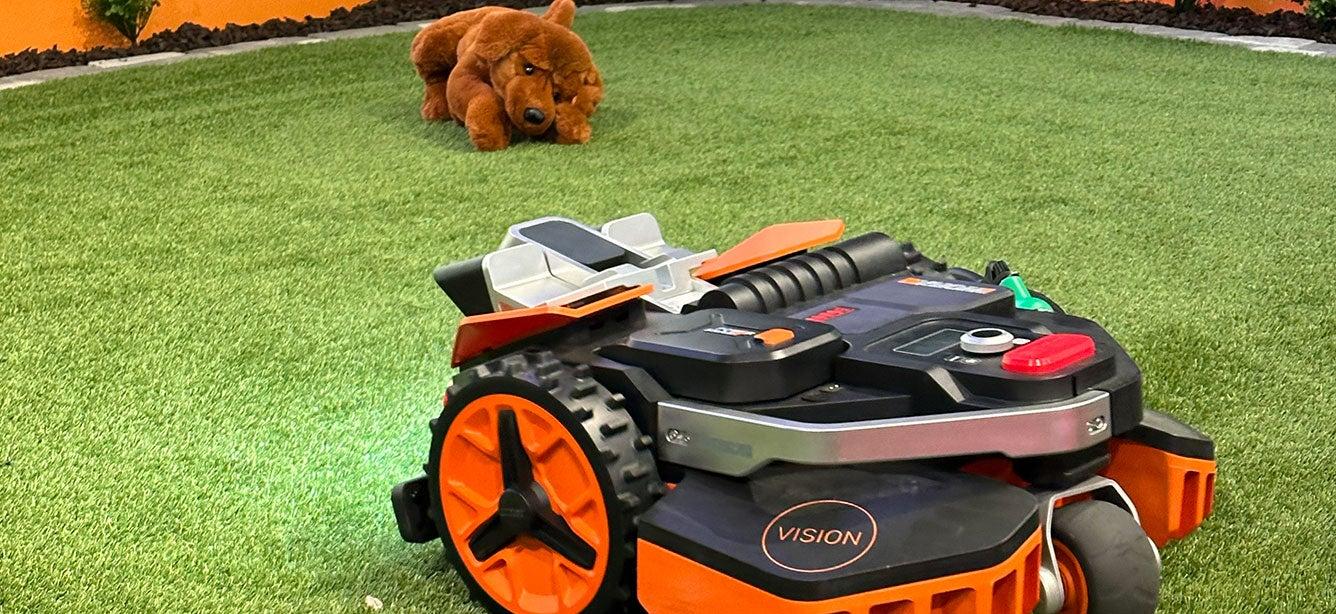
Related Topics
Advances in technology offer a window into infinite possibilities to support independent living and general wellness in our modern world. Using a home high-speed internet/wifi connection, today’s older adult can blast off with a myriad of smart home devices, safety and security tools, entertainment systems, and personal connection devices designed to help with critical communications with family, friends, and health professionals.
While searching for the right tech to fit into our lives, balancing our financial and personal needs is step number one. It’s also fun to explore how technology innovations are on a constant track to help best address the challenges of how to live our best lives as we grow older.
The latest tech that could help improve our lives as we age
One place to observe this most closely is at the annual Consumer Electronics Show, CES, where in early January over 110,000 technology enthusiasts descend on Las Vegas to wander in a wonderland of technology devices that range from the simple to the sublime. This year, following a couple of more limited years due to the pandemic, CES 2023 featured thousands of booths exhibiting exciting innovations for all consumers.
For older adults, however, each year there are an increasing number of innovations that demonstrate how tech can:
- Help us as we age and make our homes and transportation systems smarter
- Help us connect to loved ones
- Challenge our bodies and minds in revolutionary new ways
- Make the aging process a little easier
The most critical tech advances for older adults on display at CES 2023 exist in the health space. Numerous devices and wearables help monitor physical conditions such as blood pressure, heart rate, and sleep patterns, measure safe sound exposure for hearing, track eating habits, and offer at-home testing for a series of diseases. In some cases, the information can be conveyed to health professionals to enhance medical oversight for ongoing for medical conditions.
Most of these health-monitoring and measuring devices are managed with an app using a smartphone, increasing the importance of older adult adoption of wireless communication tools. Currently, 61% of U.S. adults age 65 and older have a smartphone,1 which is increasingly becoming a gateway to innovative devices for aging.
In addition to the exciting health devices at the Consumer Electronics Show, there were so many other interesting—and unique—innovations that promise to impact aging.
Self-driving vehicles: Changing the way older adults get around
A key element of importance for all of us, as we enter older adulthood, are innovations that will help us maintain our independence. One important tool is transportation. A self-driving automobile that can eliminate the concern about diminishing eyesight, mobility issues, and other realities of aging could truly be life-changing.
Several automobile manufacturers had their autonomous vehicles, or Avs, on display at CES 2023 to demonstrate the opportunities for the future. Waymo (Photo #1) has had their AVs on the road for several years, with ongoing testing and improvements that will bring us closer to personal individual ownership and use by older adults.
The devices that could help seniors around the house
Hey, who’s at the door? Well, just ask Astro , an adorable little home robot that’s the latest voice-activated device from Amazon. Astro can show you who is at the door, can carry a cup of coffee around the house for you, respond to simple requests, and serve as a “companion.”
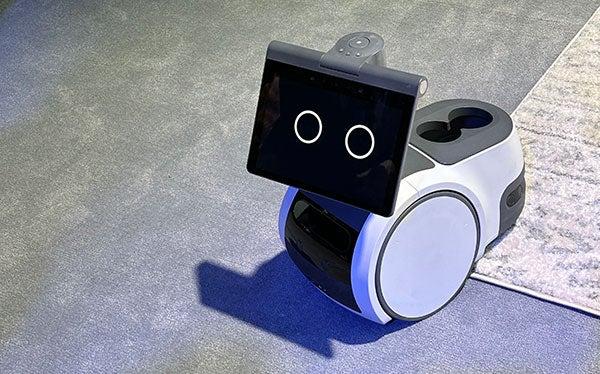
Astro may not be as warm and fuzzy as a cat or dog, but the robot has the potential to be a helpful support tool. A recent testimonial about Astro was offered from one user who had daily check-in calls with his father who uses a wheelchair. Astro can go to the wheelchair and bring the calls to him. One time, his father didn’t answer his call, and the son was able to use Astro to find that his father had fallen out of his wheelchair and needed help. The son was able to speak to his father through Astro, letting him know emergency help was on the way and keep him calm while waiting for the ambulance. Astro has fall-detection capability, offers medication reminders, and can be used for remote family and pet check-ins. Another benefit of the Astro robot is that it can connect to other Amazon activated devices in the home.
And while assistance in caring for the inside of the home takes top billing, outside care can also be a burden for older adults. Many of us are probably familiar with the wireless vacuum and mop “robot” systems that can clean a layout of our home floor plan. Well, now there’s a lawnmower showcased at CES that can cut the grass in the yard, managed wirelessly via an app on a smartphone.
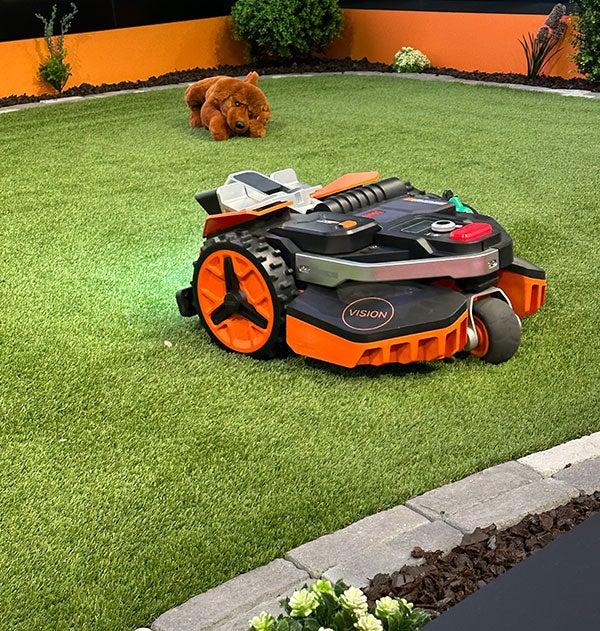
Innovations aiming to improve the health and well-being of older adults
Over 30% of people 65 and older and up to 50% of people 75 and older experience some level of hearing loss.2 The FDA’s recent approval of over-the-counter hearing aids and continued improvements in the types, styles, and battery life of prescription hearing aids mean there are now more options than ever for devices to meet the needs of people with hearing loss.
To add to ever-evolving hearing aid innovations, an exciting device unveiled at CES addresses hearing loss with a different approach: XanderGlasses. These glasses provide real-time captioning directly on the eyeglass lenses as the conversation is ongoing around you. The innovative glasses will eventually be able to be built with your own prescription glasses. These glasses offer an interesting alternative to traditional hearing aid devices for the future.
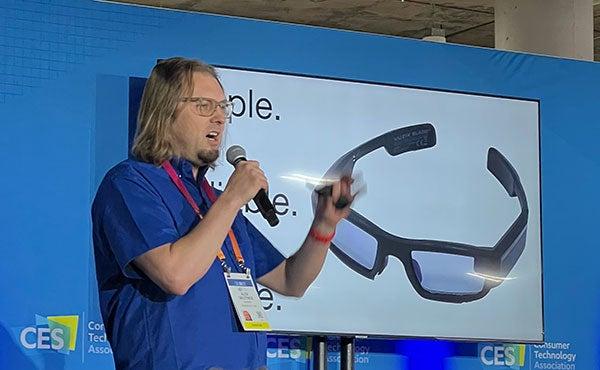
For many older adults, sometimes the everyday steps in getting dressed are challenging. Clothing that is designed to simplify the process, from head to toe, is sometimes overlooked in the world of high-tech innovations. If you’ve ever had someone in your care who is struggling to put on their shoes because they might have back problems, arthritis, or other mobility issues, then the simplicity of Kizik’s slip-on sneakers that don’t require bending or tying are an amazing find. While primarily marketed for kids, they’re well-suited for older individuals looking for easy and comfortable footwear.
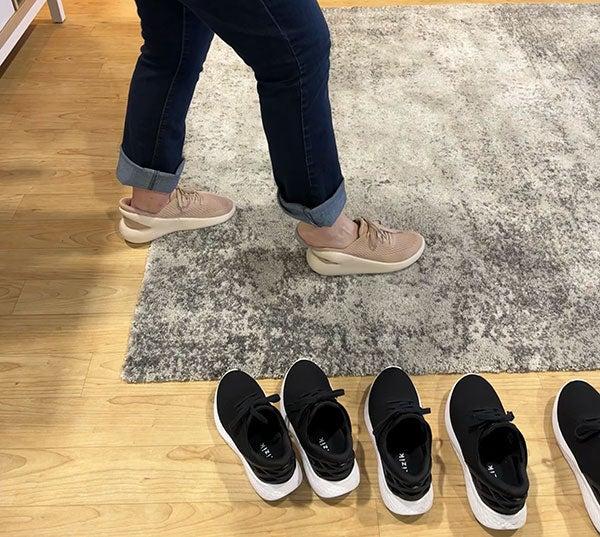
The future of supportive and fun technology
Among the other innovations on the Floor of the 2023 Consumer Electronics Show, there were numerous products in the connected home fitness tech space with wearables and trackers, continuing the trend to build and maintain healthier aging.
Available today, and on the horizon, are technologies that incorporate artificial intelligence, augmented reality, virtual reality, and haptics (devices that produce a sense of touching), to create incredible innovations with benefits that will most certainly expand the opportunities to age well in the coming years. It is exciting to imagine where technology will drive us (autonomously!) into the future.
Photos courtesy Debra Berlyn
Sources
1. Michael Faverio. Share of those 65 and older who are tech users has grown in the past decade. Pew Research Center. Jan. 13, 2022. Found on the internet at https://www.pewresearch.org/fact-tank/2022/01/13/share-of-those-65-and-older-who-are-tech-users-has-grown-in-the-past-decade/
2. American Academy of Audiology. Seniors and Hearing Loss. Found on the internet at https://www.audiology.org/consumers-and-patients/seniors-hearing-loss/




